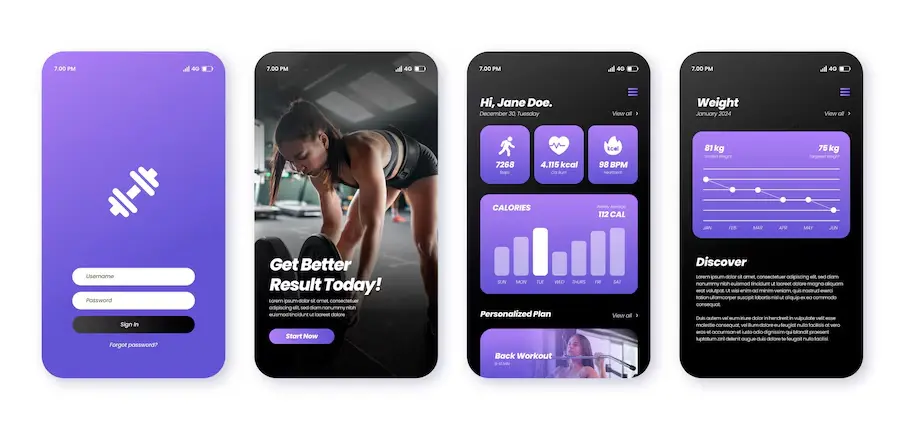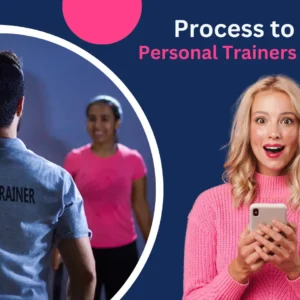Introduction to Fitness Apps
In today’s digital age, fitness apps have revolutionized the way people approach health and wellness. These applications offer a convenient and accessible platform for individuals to track their fitness goals, monitor progress, and access personalized workout routines. With the increasing popularity of fitness apps, it has become imperative for businesses, including dance studios, to leverage this technology to enhance their offerings and engage with their audience effectively.
Significance of Fitness Apps for Dance Studios
Dance studios, in particular, can greatly benefit from having their fitness apps. These apps provide a platform for dancers to track their progress and stay motivated but also offer additional resources such as tutorials, nutritional guidance, and community forums. By integrating fitness apps into their business model, dance studios can streamline operations, improve customer satisfaction, and stay competitive in the market.
Understanding the Needs of Your Dance Studio
Before embarking on the journey of building a fitness app for your dance studio, it’s crucial to understand the specific needs and requirements of your business. Conduct thorough research to identify your target audience, their preferences, and the challenges they face in achieving their fitness goals. This will help you tailor your app to meet the unique needs of your dancers and differentiate yourself from competitors.
Setting Goals and Objectives
Once you have a clear understanding of your target audience, it’s time to set goals and objectives for your fitness app. Whether it’s increasing membership sign-ups, improving retention rates, or enhancing user engagement, establishing clear goals will provide direction and focus throughout the development process. Define measurable objectives that align with your overall business strategy and prioritize them accordingly.
Choosing the Right Features
The success of your fitness app hinges on the features it offers to users. While basic functionalities such as workout tracking, progress monitoring, and goal setting are essential, consider incorporating dance-specific features to cater to your audience. This could include video tutorials, choreography breakdowns, music playlists, and social sharing capabilities. Additionally, explore advanced features such as AI-powered coaching, virtual reality experiences, and gamification elements to enhance the user experience further.
Designing the User Interface (UI)
A well-designed user interface is critical for ensuring a seamless and enjoyable user experience. Pay attention to the visual aesthetics, layout, and navigation of your app to create an intuitive and engaging interface. Incorporate dance-themed elements such as vibrant colors, dynamic animations, and fluid transitions to resonate with your audience and reinforce your brand identity. Prioritize simplicity and functionality to make it easy for users to navigate the app and access the features they need.
Developing the App
Once the design phase is complete, it’s time to bring your fitness app to life through development. Hire a reputable app development team with experience in building fitness applications to ensure a high-quality end product. Collaborate closely with developers to translate your vision into reality and incorporate feedback throughout the development process. Select the appropriate technology stack based on your app’s requirements, scalability needs, and budget constraints.
Testing and Quality Assurance
Before launching your fitness app to the public, it’s crucial to conduct thorough testing and quality assurance to identify and address any issues or bugs. Test the app across different devices, operating systems, and screen sizes to ensure compatibility and seamless performance. Utilize automated testing tools and manual testing methodologies to validate functionality, usability, and security aspects. Pay attention to user feedback during the testing phase and make necessary adjustments to optimize the app for launch.
Launching Your Fitness App
The success of your fitness app launch depends on effective marketing and promotion strategies. Create buzz around the launch by leveraging social media, email marketing, influencer partnerships, and press releases. Offer exclusive promotions, discounts, or incentives to encourage early adoption and generate excitement among your target audience. Monitor app store rankings and user reviews closely post-launch and addresses any issues promptly to ensure a positive user experience.
Monitoring and Maintenance
After the initial launch, ongoing monitoring and maintenance are essential to keep your fitness app running smoothly. Regularly update the app with new features, bug fixes, and performance improvements to address user feedback and evolving industry trends. Implement robust security measures to protect user data and safeguard against potential threats. Provide responsive customer support to address user inquiries, issues, or concerns promptly and maintain high levels of user satisfaction.
Tracking Performance Metrics
If you want to measure the success of your fitness app, it’s important to track certain key performance indicators (KPIs) related to user engagement, retention, and monetization. You should analyze metrics such as app downloads, active users, session duration, conversion rates, and in-app purchases to get a better understanding of your app’s performance and identify areas for improvement. To do this, you can utilize analytics tools and dashboards to visualize data trends, generate insights, and make informed decisions to optimize app performance and drive business growth.
User Support and Feedback
Encourage open communication with users and solicit feedback to continuously improve your fitness app. Provide multiple channels for users to reach out for support, including in-app chat, email, and social media platforms. Actively listen to user feedback, suggestions, and complaints and prioritize addressing their needs and concerns. Implement a feedback loop to incorporate user insights into future app updates and enhancements and foster a sense of community and loyalty among your user base.
Scaling Your App
As your dance studio grows and evolves, it’s essential to scale your fitness app accordingly to accommodate increasing demand and expanding offerings. Continuously evaluate user needs, market trends, and technological advancements to identify opportunities for growth and innovation. Expand features and functionalities to cater to diverse user preferences and stay ahead of competitors. Invest in scalability measures such as cloud infrastructure, server optimization, and load balancing to ensure seamless performance during peak usage periods.
Staying Updated with Trends
The fitness app landscape is constantly evolving with new technologies, trends, and consumer preferences emerging regularly. Stay abreast of the latest developments in fitness app development, wearable technology, AI, and machine learning to remain competitive in the market. Explore innovative features and functionalities to differentiate your app and provide unique value to users. Foster a culture of innovation within your team and embrace experimentation to stay ahead of the curve and position your app for long-term success.
Conclusion
Building a fitness app for your dance studio in 2024 offers a myriad of opportunities to enhance engagement, streamline operations, and drive business growth. By understanding the unique needs of your studio, setting clear goals, and leveraging the right technology and features, you can create a compelling and user-centric app experience that resonates with your audience. With careful planning, execution, and ongoing optimization, your fitness app has the potential to become an indispensable tool for dancers and fitness enthusiasts alike.





